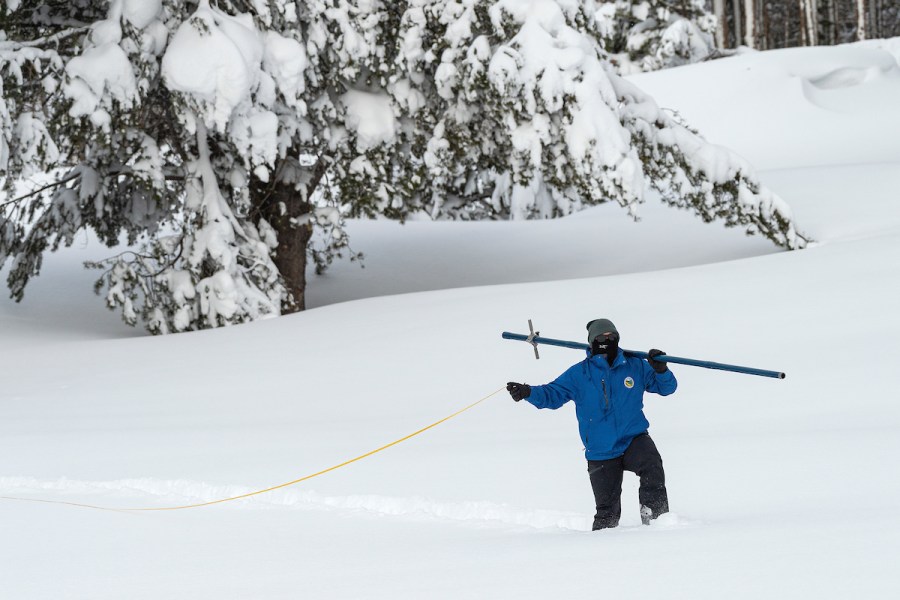SIERRA NEVADA MOUNTAINS, Calif. (KRON) — With no snow or rain forecast to fall within the next two weeks, California’s winter precipitation totals are once again at risk of falling below average.
California’s most valuable water source, the Sierra Nevada snowpack, suffered from January’s dry spell, said Sean de Guzman of the California Department of Water Resources.
The impact of January’s dry spell was obvious Tuesday when the DWR conducted its second snow survey of the wet season.
California’s mountain snow currently holds 92% of the water that it normally does this time of year, a dramatic drop from 160% recorded in December from the first snow survey, Guzman said.
This winter has been a rollercoaster of powerful, precipitation-packed atmospheric rivers, followed up by long stretches of sunshine.
“Our climate is experiencing volatile shifts from wet to dry. Just last month our snowpack was well above average. But with practically no snow accumulation (in January), it’s now near-average,” Guzman said.

For the December snow survey, the DWR’s Snow Surveys and Water Supply Forecasting Unit team happily trudged through deep, fluffy snow to measure water content at Phillips Station in the Sierra Nevada.
On Tuesday, the powder gone.
The Sierra Nevada provides 30 percent of the state’s water supply.
“We had record rainfall in October during that Category-5 atmospheric river. But that was followed by a dry November. December snowfall boosted our snowpack well above average. Some locations in the state had the snowiest December (ever). However this past January was one of the driest Januarys on record,” Guzman said.
California’s wettest months of the year are usually December, January, and February.
January “basically wiped out whatever head-start we had. We will need to see a return of those winter storms in February and March to remain normal,” Guzman said.
“December was really great. But here we are in February and we are getting more concerned,” Guzman said.
DWR officials said there’s no way of knowing if March will come to the rescue. For now, every Californian has a responsibility to conserve as much water as possible, Guzman said.

Most of California’s reservoirs are still below average from two consecutive dry winters in 2020 and 2019.
“We are definitely still in a drought. A completely dry January shows how quickly surpluses can disappear,” said DWR director Karla Nemeth. “The variability of California weather proves that nothing is guaranteed and further emphasizes the need to conserve and continue preparing for a possible third dry year.”
State water officials will conduct a third snow survey on March 1.
